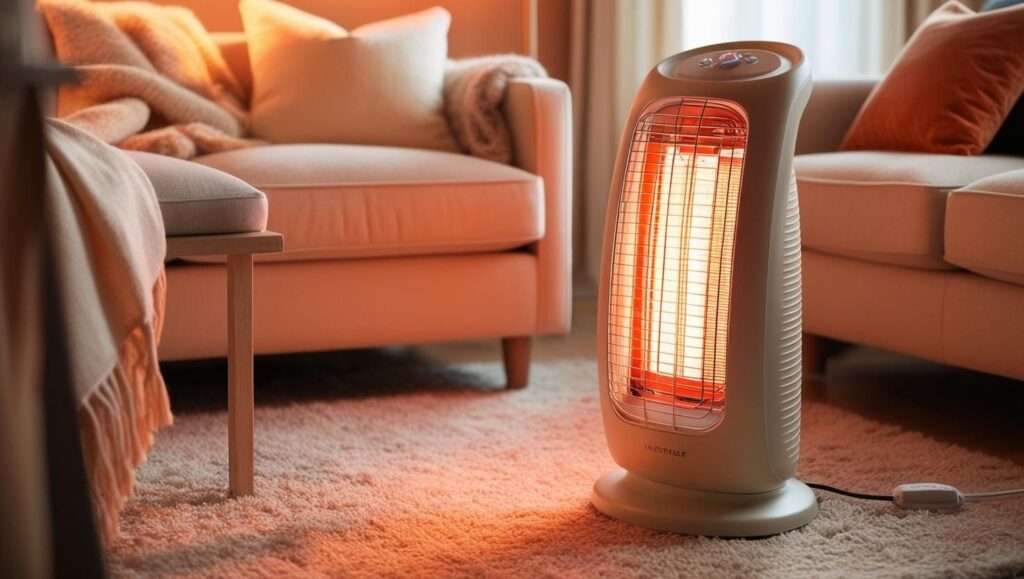Heat pumps are categorized as an energy-efficient means of warming and cooling homes. They work by routing heat load rather than creating the heat that conventional furnaces make. Heat pumps have an emergency or supplementary heating system incorporated into them, and this system should not be used except under some conditions. Understanding when it’s the time to transition your system to operating on emergency heat is also essential and strongly encouraged.
What Is Emergency Heat?
Emergency heat is the secondary heating system, the electric element in most heat pumps. They work as a backup or additional heat source when the heat pump located outdoors cannot meet some heating needs. The emergency coils enable the heat pump to supply adequate heat requirements but are inferior to the primary heat pump.
Emergency Heat vs Auxiliary Heat
Specifically, it is recognized that emergency heat and auxiliary heat are terms for the same system. Sometimes, they are used interchangeably. Auxiliary heat can also mean another heating system secondary to a heat pump.
When to Use It
There are a few scenarios when it is appropriate to utilize a heat pump’s emergency heating function:
Extremely Cold Temperatures
Their efficacy in removing heat from the air outside the house is weather-specific. They suffer whenever the temperature reaches below 30 to 40 degrees Fahrenheit. At this point, we can activate the emergency coils. This means that when it is freezing, the supplemental heat makes the temperature in your home warm enough.
Defrost Cycle
Heating systems occasionally switch to their defrost mode, during which the ice formed on the outside unit is thawed. Since any specific heating elements in the units are available to distribute electric heating elements, these will automatically turn on to ensure the absence of any temperature decreases in the home when defrosting takes place.
Coolant Leaks or Low Levels
Your heat pump depends on a fluid known as a refrigerant to carry heat in or outside your home. Read, if the coolant is leaked, it will consequently decrease the effectiveness of the system. When topping up low coolant, it may take some time to complete, which makes use of the emergency heat to keep the interior comfortable.
Power Outages
In addition, because of the increased power outages, it becomes hard to use your heat pump as required. Heating, as well as some gas furnaces, may not heavily depend on electricity to power them. If your power goes off, you must turn on those emergency coils to help with heating.
Control Board Malfunctions
Any issue affecting a control board that is supposed to run your unit means your heat pump will not run. Emergency heat provides temporary warmth in this case before service is required on the leading equipment.

How Not to Use Emergency Heat
Secondary electric heaters must be kept to a minimum if possible.
There are downsides to running Emergency heat regularly:
Higher Energy Bills
Emergency heating coils are electrical appliances that produce heat using a great deal of electricity. This ends up being more expensive than simply running a practical heat pump all on its own. Reduce the use of emergency heating to the shortest time possible.
System Overwork
It is worse when the emergency system is called into frequent use to heat all the rooms of a on the electric coils. This translates into shorter lifespan of the heater’s heating elements because of the longer run time.
Further Loss of Efficiency
The extraction rate and efficiency of heat pumps decline gradually when temperatures reduce outside. This effect is negated by simultaneously running emergency coils except where the temperature becomes too low for heat pump operation. Having used coils too much has the effect of taking temperatures to this cutoff point.
Voids Warranty Coverage
Most manufacturers frown upon leaning on the auxiliary heater when the compressor and other parts are yet working. So doing could jeopardize parts or labor warranty guarantee.
Instead of keeping electric coils engaged as your sole or primary heat source, consider:
- Forcing yourself to put on warmer clothes or cranking up your heater a few degrees to help heat pumps.
- Allowing rooms to cool down slightly then use the emergency coils.
- Briefly employing the use of a high efficiency portable space heater in order to drive out moisture in cold areas
- Constant emergency heating if required, should be done by contacting an HVAC service technician.
Conclusion
A backup system for heat pumps is called emergency heating. It is on by default in some situations but there are also options to turn it on and off manually. These electric coils should therefore be sparingly applied to avoid cases of inefficiency, high costs and accelerated distortion of heating elements. If your heat pump often fails to handle heating calls adequately, look for other ways on how to warm your home efficiently. Consulting a technician may reveal other problems that hinder the system from reaching its full potential and thus once again run at the efficiency indicated above.

